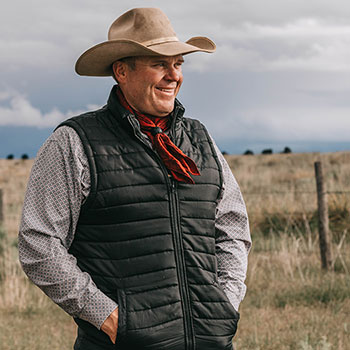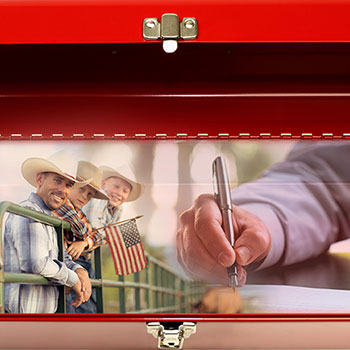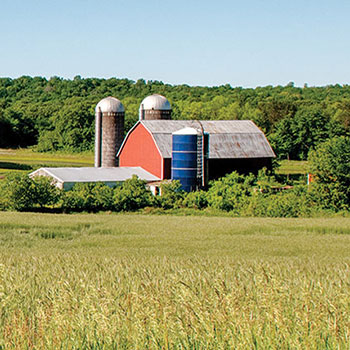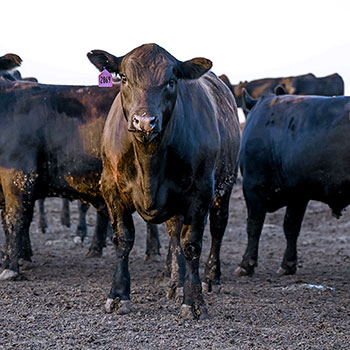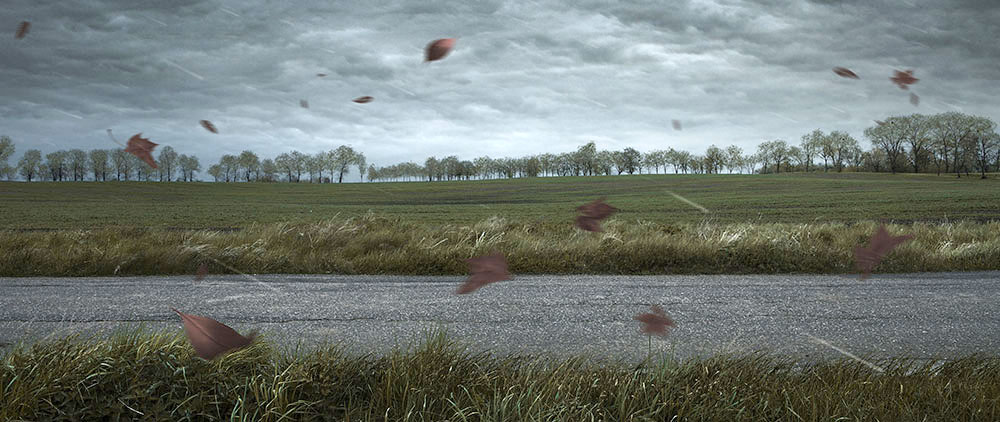
Is Blackleg Looming?
Learn how the weather can affect clostridial diseases and what you can do to keep your herd protected.
From blizzards to torrential flooding, dramatic weather continues to challenge cattle producers. There are many things to worry about when the weather is bad, but there’s a threat that may not be top of mind — blackleg.
“Blackleg can occur after flooding, and sometimes we’ve even seen outbreaks of blackleg after dirt work or excavating has been done on the farm,” says Daniel Cummings, veterinarian with Boehringer Ingelheim. “The clostridial spores will rise to the top of the soil, and then we get an increased risk of animals ingesting those infective spores.”
Cummings notes that outbreaks can also occur after prolonged dry spells followed by heavy rainfall.
Clinical signs of blackleg include fever, depression, tremors or even loss of appetite. According to Cummings, these signs are difficult to identify and, oftentimes, are not observed within a herd. Many times, the first sign of disease is acute or sudden death of cattle.
Fig. 1: The path of clostridial spores from the soil to infection of the animal |
|
| INCEPTION | Spores are stirred up from the soil through conditions such as heavy rainfall.1 |
| INFESTATION | Clostridial spores are found in the soil and can live in a dormant state for years.2 |
| INGESTION | Cattle consume the spores while grazing or eating feed contaminated with the spores.2 |
| INFECTION | Spores are triggered by anaerobic conditions, like bruising and damaged tissue, in the muscle.1 |
“Most of the time, blackleg affects well-conditioned or well-nourished cattle ranging from ages 6 to 18 months,” says Cummings.
Finding a successful treatment for blackleg is rare, so taking preventive measures is critical.³
“We rely heavily on prevention through vaccination. However, this year we haven’t vaccinated cattle as we normally would, according to the herd health calendar, due to weather challenges,” says Cummings. “I think this may be a contributing factor as to why we’re seeing an increase in blackleg cases.”
To protect against blackleg and other fatal clostridial diseases, Cummings recommends vaccinating with a single-dose, seven-way clostridium vaccine.
“The clostridium vaccines are very effective because they stimulate an adequate immune response to protect against blackleg,” says Cummings. “Blackleg is one of the few diseases in cattle that can be prevented, quite well, with vaccination, because our vaccines are considered to be highly effective and safe.”
If a producer experiences, or suspects, blackleg disease in their herd triggered by factors that may include flooding, dirt excavation or extreme weather conditions, the first step should be contacting their veterinarian. Working with a veterinarian will help determine the most effective vaccine protocol to improve overall herd health.
Editor’s note: This article is from broadhead on behalf of Boehringer Ingelheim.
- 1Cothren J. Blackleg in cattle still problem after thousands of years. North Carolina Cooperative Extension. 2014. Available at https://wilkes.ces.ncsu.edu/2014/10/blackleg-in-cattle-still-problem-after-thousands-of-years/. Accessed October 11, 2019.
- 2Rodning SP, Owsley WF, Gard JA, Lovelady AS. Blackleg and other clostridial diseases in cattle. Alabama Cooperative Extension System, Alabama A&M and Auburn Universities. 2018. Available at https://www.aces.edu/blog/topics/beef/blackleg-and-other-clostridial-diseases-in-cattle/. Accessed October 11, 2019.
- 3McGuirk SM. Managing clostridial diseases in cattle. University of Wisconsin, School of Veterinary Medicine. Available at https://www.vetmed.wisc.edu/dms/fapm/fapmtools/7health/manage-clostridial.pdf. Accessed October 11, 2019.

